
The Who, What Where And When of Stainless Steel Maintenance In And Around The House – by SASSDA
What is Stainless Steel?
Stainless Steels are inherently corrosion resistant materials that do not need additional surface protection like painting, galvanising or anodising to enhance their appearance and lifespan.
Stainless steel is protected by a thin surface layer. The strength of the layer and thus the protection is generated from chromium in the stainless steel and oxygen from the air. Many grades of stainless steel are available for different applications. Thus the first step would be to select the correct grade of stainless steel for the application.
Sassda and its members will be able to supply all relevant information to guide the selection process.
Unlike rust (also a surface layer), the surface layer on stainless steel does not readily react with most substances, hence being called the passive layer.
Like human skin, this layer has the ability to repair itself given that the affected surface is clean with access to environmental oxygen. This explains the fact that some routine and simple maintenance and cleaning is needed to keep stainless steel surfaces in good condition so that the aesthetic appearance and corrosion resistance are not compromised.
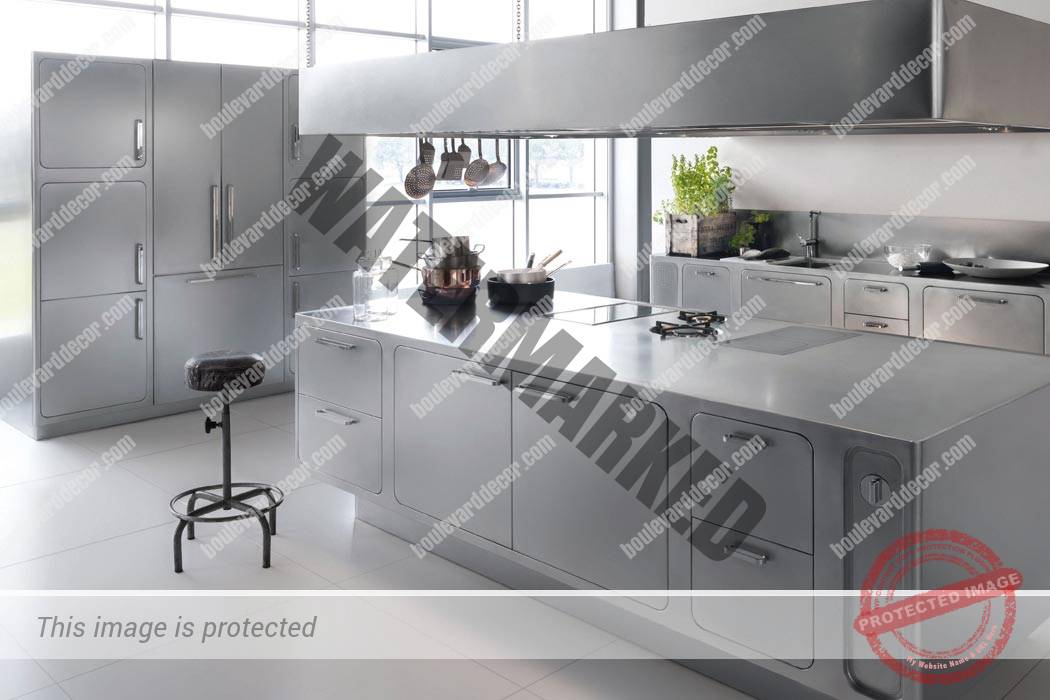
Where is Stainless Steel used in my home and kitchen?
Stainless steel touches every part of our lives and can be used for various functions and application in and around the house. This would range from security fencing and garden furniture to creations of art, balustrades, kitchen surfaces and appliances; even fire places or wherever the superior properties of the material are needed. Stainless steel is mainly selected for corrosion resistance and durability. Combining this with the aesthetic appearance, versatility, hygiene and safety properties and it renders a popular environmentally safe product with exceptional Life Cycle Costing benefits.
How do I clean exterior surfaces?
On external applications, such as façades, washing of the surfaces can be a natural process where rainfall can normally be expected to clean accumulations of dirt and other deposits efficiently, depending on the amount of exposure to corrosion agents and whether the design allows for efficient run-off and the surface smoothness. Remember: it is important to allow the material free access to the environmental oxygen to keep the passive layer intact. Special attention should be given to sheltered areas and crevices that are created by the design and installation. During routine cleaning it is important to ensure that accumulations of contaminants are efficiently removed without damaging the material or the surface finish. This is particularly important in marine and industrial environments, where build-up of airborne
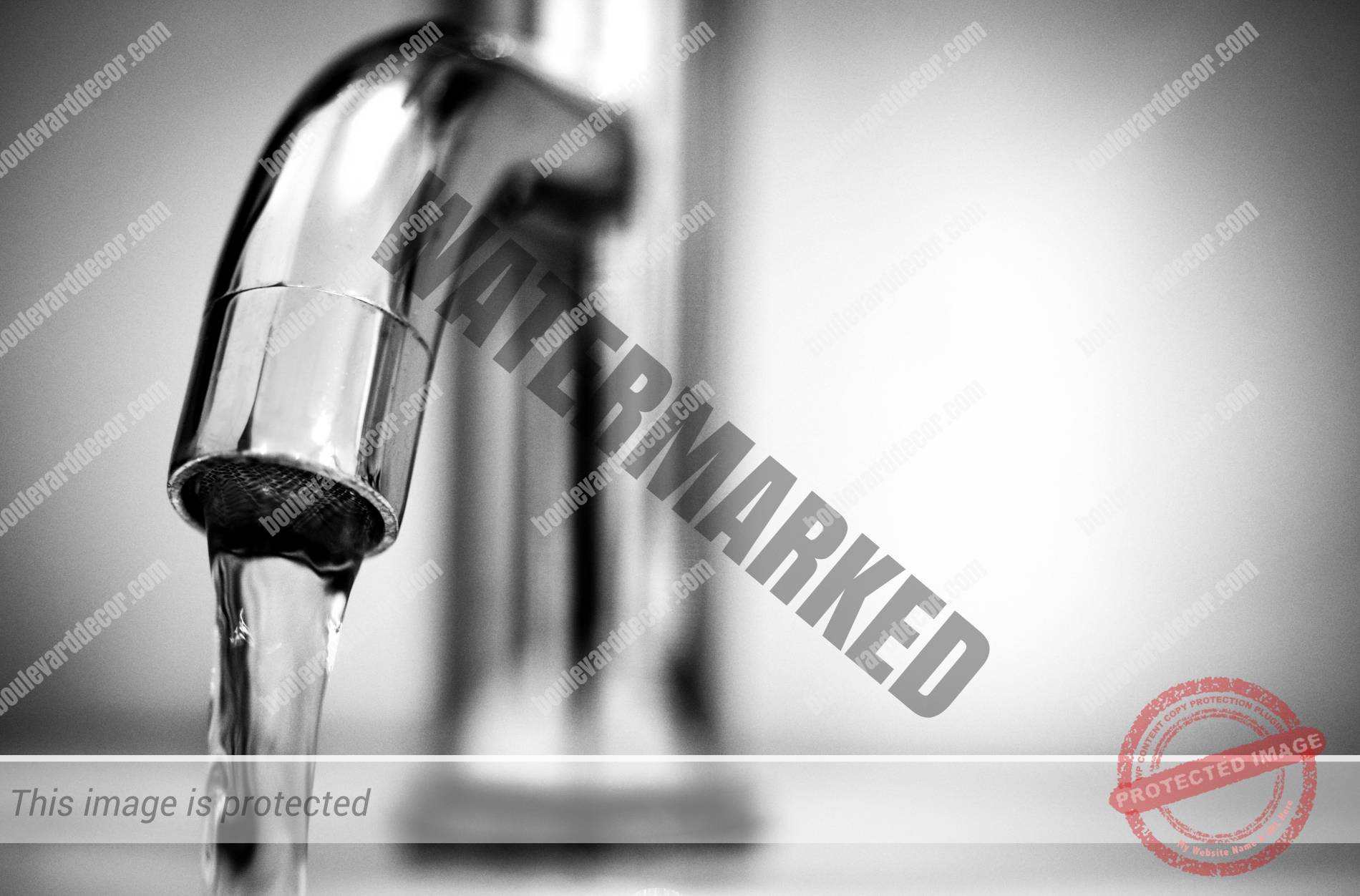
corrosive agents can result in corrosion in the form of discolouration and even pitting.
On building exterior applications, stainless steel may be exposed to a wider range of potentially more aggressive environments as a result of contact with:
- Marine atmospheres.
- Environments laden with industrial pollutants.
- Salt spray from wave action, as well as.
- Atmospheric dirt and traffic film.
A damp cloth or chamois leather, soft household soap and clean water will usually be suitable for washing and removing normal dirt. For more stubborn dirt, nylon pads such as “Scotch-Brite” pads can be used, but may scratch some polished surfaces. Metal based scouring pads, cleaning wool or wire brushes must not be used on stainless steel. Apart from scratching the surface, these pads can leave carbon steel deposits on the stainless surface, which can subsequently develop into rust. Non-stainless steel wire brushes must not be used.
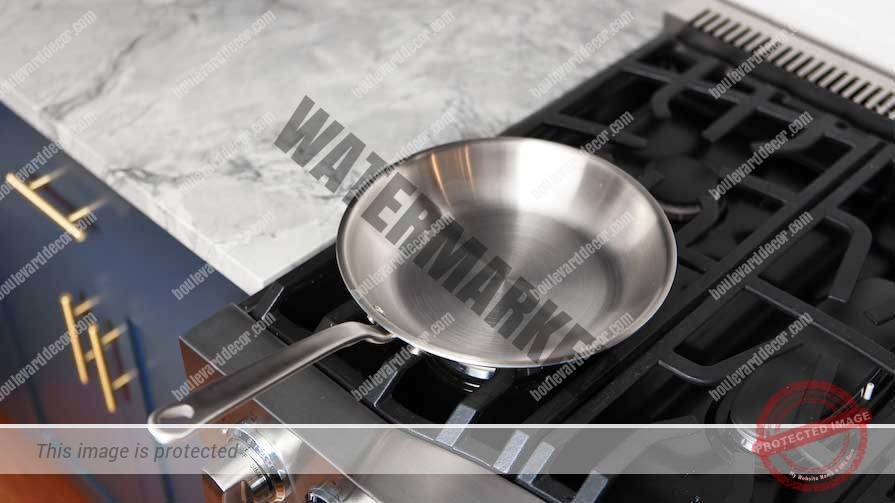
Follow the grain pattern when cleaning on “grained” directional finishes, not across it. It is advised to dry the surface to prevent watermarks, especially in hard water areas. The use of deionised (distilled) water will prevent the formation of hard water staining.
For more stubborn stains, mild household cream cleansers should be effective for cleaning off watermarks and light discolouration. After cleaning, rinse with water and dry to avoid streaking and water marks. Scouring powers should not be used as these products can leave scratches on stainless steel surfaces. More serious oil and grease marks can be removed with alcohol based products, or other solvents such as acetone. These non-chloride containing products are not a corrosion hazard to stainless steel. Heavily neglected surfaces can be treated by removing most of the settled deposits with the methods mentioned earlier. The remainder can then be removed with metal polishes, such as those for cleaning chromium-plated items. Care must be taken as highly polished surfaces may become scratched with these cleaners. Cleaners for silver and brass should be avoided.
How often should I clean outside surfaces?
It is a good practice to clean the stainless steel at the same frequency as the building’s windows. The reasoning is simply that the same dirt build-up visible on the windows will be on all exterior surfaces including stainless steel. A dirty window is a “clear” indication that stainless steel is also dirty. This might damage the passive layer depending on the environment. Removing the dirt will restore the passive layer in most cases. Depending on the severity of deposit build up, routine cleaning frequencies of 6-12 months for light soiling and 3-6 months for heavy soiling is advisable.
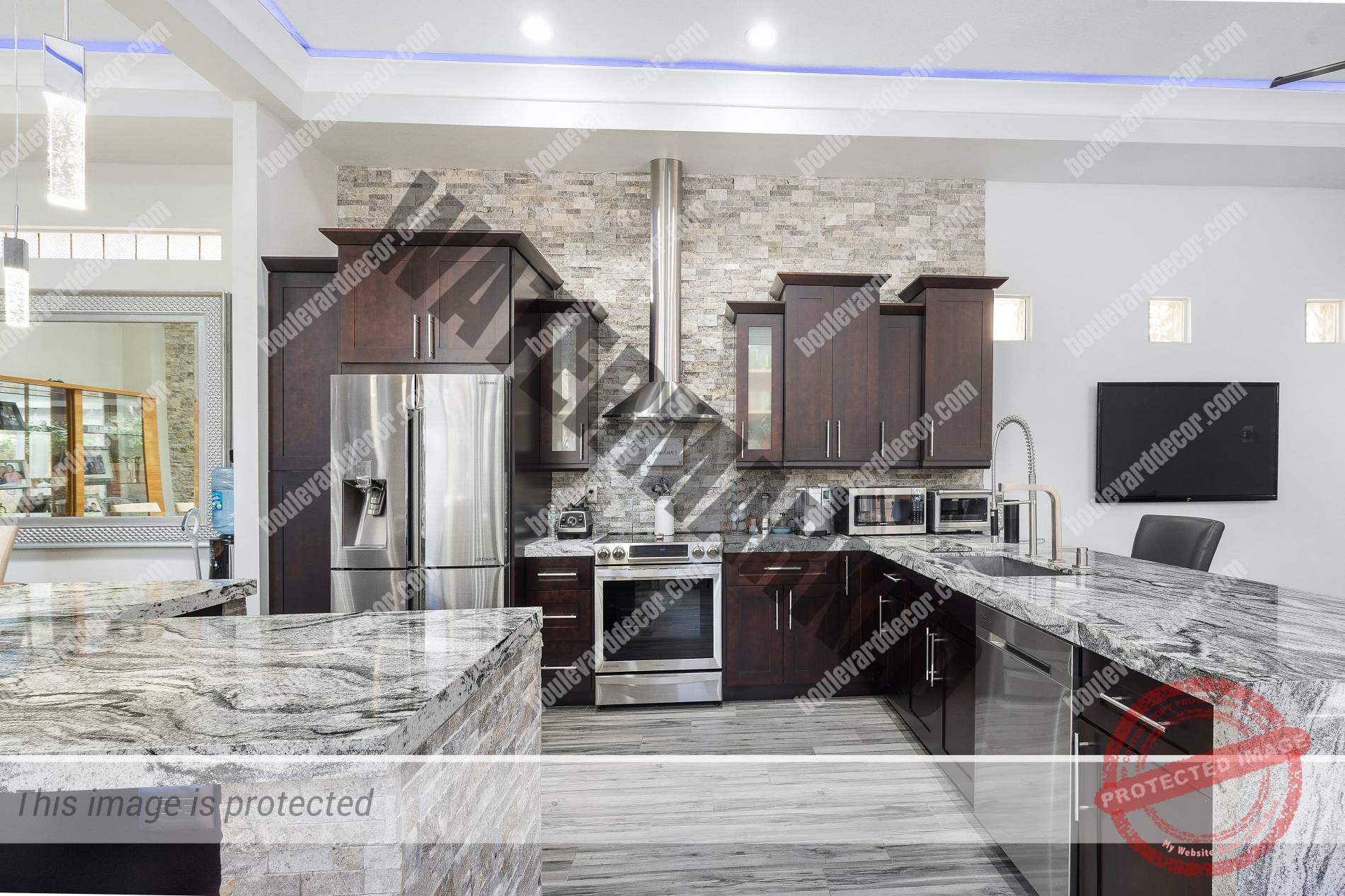
How do I clean interior surfaces?
The cleaning of stainless steel items for building interiors is also aimed at ensuring oxygen reaching the surface and keeping the passive layer intact. It is really no different to other materials and entails little more than routine cleaning with soap and clean water. Cleaning should be done before there is a visible build-up of soiling, so that the effort of cleaning is minimised along with the risk of marking the surfaces.
On interior applications, finger marks can be an issue. However, there are a wide range of finishes available for stainless steels, many of which are particularly suitable for use in high traffic public areas. Selecting finishes that are less sensitive to fingerprint marking in the design process will reduce the effort and costs of cleaning during the service life of the finished building. Sassda can offer free advice in this regard and can assist with sourcing suitable materials and fabricators.
Brushed finishes, which are a popular choice for interiors, may show finger marks shortly after installation, but the visibility of the marking should become less evident after the first few cleaning operations as the passive layer settles to the environment. To remove fingerprints and other superficial marks from architectural finishes, soapy water or a mild detergent are usually safe and successful. Proprietary spray cleaners are
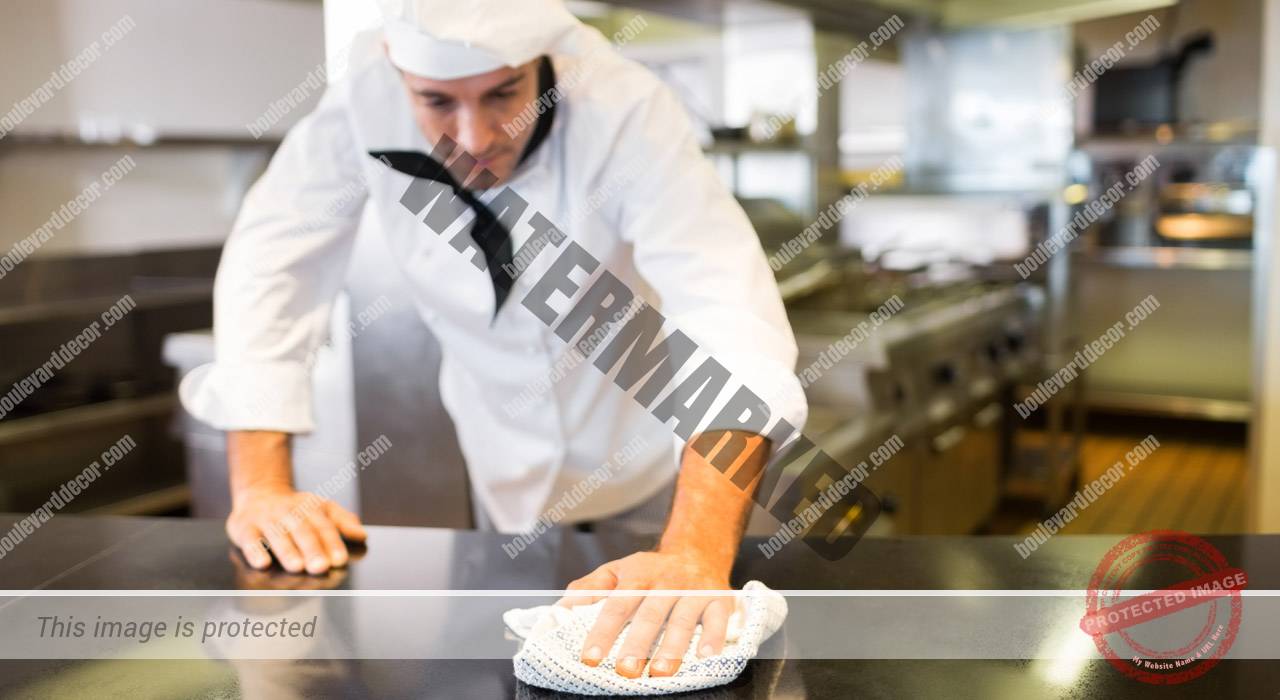
available, which combine ease of cleaning with a light film that produces an even and smooth lustre. These spray cleaners remove existing fingerprints and leave the surface in a condition that reduces the tendency for fingerprints to show in subsequent service. After applying the spray to the surface, polish with a dry cloth. Sassda will be able to advice on the suitability products locally available. As a rule cleaning agents with chloride content should be avoided. Mirror- polished stainless steel can be cleaned with glass cleansers. These products should also be chloride-free.
How do I clean kitchen surfaces and utensils?
Stainless steel surfaces and utensils in the kitchen are exposed to wear and tear, harsh chemicals and high temperatures yet will last for many years looking “simply brilliant”. The table alongside lists various cleaning challenges on stainless steel and would be of value to any home owner.
| Challenge | Cleaning agent | Comments |
| Routine Cleaning All finishes | Soap or mild detergent and water (Preferably warm) | Sponge, rinse with clean water, wipe dry if necessary. Follow polish lines. |
| Fingerprints All finishes | Soap and warm water or organic solvent (e.g. acetone, alcohol, methylated spirits) | Rinse with clean water and wipe dry. Follow polish lines |
| Stubborn Stains & Discolouration. All finishes. | Mild cleaning solutions, e.g. Handy Andy, specialty stainless steel cleaners. | Use rag, sponge or fibre brush (soft nylon or natural bristle. An old toothbrush can be useful). Rinse well with clean water and wipe dry. Follow polish lines. |
| Lime Deposits from Hard Water. | Solution of one part vinegar to three parts water. | Soak in solution then brush to loosen. Rinse well with clean water. |
|
Oil or Grease Marks. All finishes. |
Organic solvents (e.g. acetone, alcohol, methylated spirits, proprietary “safety solvents”). Baked-on grease can be softened beforehand with ammonia. | Clean after with soap and water, rinse with clean water and dry. Follow polish lines. |
| Cooking Pot Boiled Dry. | Remove burnt food by soaking in hot water with detergent, baking soda or ammonia. | Afterwards clean and polish, with a mild abrasive if necessary. See comments re steel wool. |
| Scratches on Polished (Satin) Finish. | Slight scratches – use impregnated nylon pads. Follow polish lines. Then clean with soap or detergent as for routine cleaning. | Do not use ordinary steel wool – iron particles may become embedded in the stainless steel and cause further surface problems. Stainless steel and “Scotch- Brite” scouring pads are satisfactory. |
How do I remember all of this?
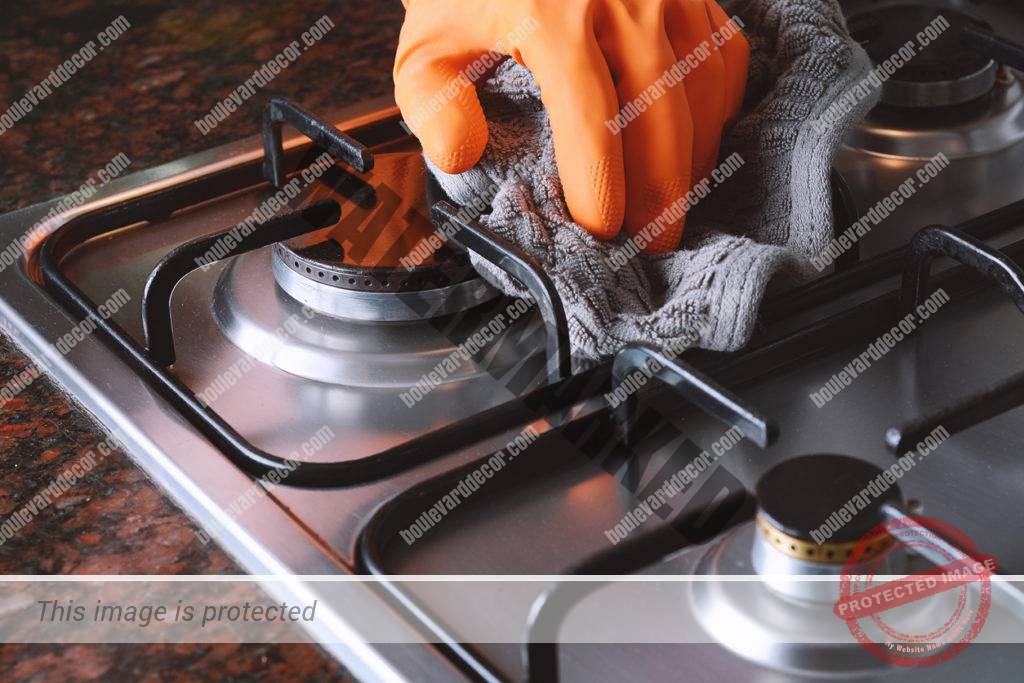
When using stainless steel in and around the house, this question becomes irrelevant to some extent. Simple routine cleaning with a clean soft cloth, mild soap and water will do the trick 90% of the time. It’s important to use stainless steel safe cleaning agents and suitable cleaning brushes etc.
Who can I contact for more information?
The Southern African Stainless Steel Development Association (sassda) supports the stainless steel industry by creating awareness through education, events & promotions, advertising and technical assistance.
For more information on stainless steel, contact us at our Head Office, 1st Floor, Block D, Homestead Business Park, Homestead Road, Rivonia, Johannesburg. Call +27(0)11 883 0119 or via our website to find the regional contact details, on www.sassda.co.za Sassda members all adhere to a code of conduct and will provide you with quality service, products and advice.
Stainless Steel. It’s Simply Brilliant.
For further information regarding stainless steel applications, grades or suppliers contact sassda on 011 883 0119, or visit www.sassda.co.za.
All Credits and rights to the above article belong to SASSDA – Stainless Steel-Care and Maintenance Brochure.



